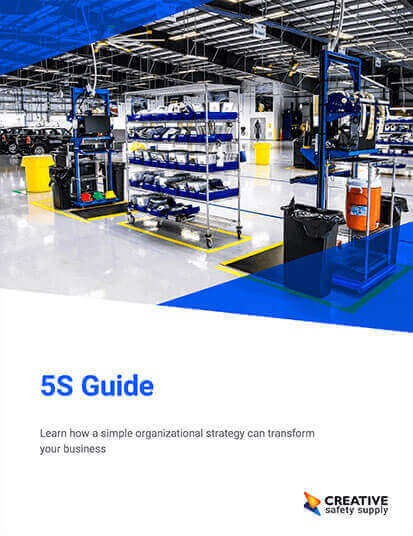
Supply chain integration is a process where all the parties involved with the fulfillment of a product are integrated into a single system. This requires significant coordination and alignment in order to ensure everyone is effectively working toward the same goal at all times.
Having the parts required for a product show up where they are needed, when they are needed, helps to not only prevent delays in the manufacturing process, but also eliminates a lot of wasted time, storage space, and more. When done properly, supply chain integration will bring parties that are often at odds together with a single focus.

All of the materials and components from along the supply chain are needed, and by integrating everything into a single system, it is much easier for effective product creation.
Information Sharing in Supply Chain Integration
The concept of supply chain integration goes back many decades, and it has been used by companies around the world to improve their systems dramatically. While there are many different ways that this type of thing can be implemented into a system, one of the most important things regardless of how it is used is going to be information sharing.

When looking at the information sharing of supply chain integration, most companies go through a series of stages once they begin working toward a full supply chain integration. These stages are as follows:
- Baseline - This is the first stage, and it is when every department or system within a company is managing their own supply chain, and related issues. Companies also refer to this as a siloed approach, and while it can have some benefits, it is quite inefficient.
- Functional Integration - In this next stage, all the different departments within a company will work together to help to improve efficiency and reduce cost. This could be done by combining orders, scheduling jobs together, or other important steps.
- Internal Supply Chain Integration - All the departments within a company are connected using the same systems. This will almost always involve using some type of IT infrastructure solution that allows the departments to work efficiently together, share their needs, and identify collaboration opportunities.
- External Supply Chain Integration - The final stage involves external vendors as well as all of the internal departments. Providing a vendor with system access, and encouraging them to function almost as another department helps to generate the best possible results.
Integrating Supply Chains
When it comes to integrating supply chains within a company, there are quite a few things that need to come together. The following are some of the key steps that most companies will need to take during this process:
- Choosing Vendors - Choosing vendors is more than just finding one that can provide the necessary parts. In addition to that, the vendor must be able to supply their piece at the needed time and place based on the overall supply chain.
- Internal Teams - Working with the internal teams of a company to work based on the needs of the overall system rather than just their department. Having set procedures based on the big picture can help to eliminate waste, and improve efficiency.
- Waste Elimination - While often overlooked, waste elimination should be an important part of an effective supply chain integration. This can happen when either a vendor or an internal team will physically relocate in order to more efficiently complete the work that needs to be done.
There are many other things involved with effective supply chain integration. This can seem like a very complex process, and in many ways, it really is. Once the initial integration is completed, the system should run very smoothly for years to come.
In most cases, the initial integration of the supply chain will require that all parties get together to discuss their abilities, as well as their needs. Going over all the logistics in an open environment will help provide everyone the opportunity to make suggestions, express concerns, and overcome obstacles, before it is ever implemented into a production environment.
Supplier Integration
There are many points along the production process where the suppliers and the producers meet. This would be where the suppliers bring specific parts, resources, or other items to the producer for use. Ideally the supplier will deliver their supplies directly to where they are going to be used, or at least as close as possible.
This requires that those who produce products provide their suppliers with more access, training, and other resources than many companies are used to. In essence, this can move the relationship from a supplier-customer relationship to a true partnership.
This often requires some additional investment on the part of the company, and may even mean higher overall prices for the products because more expected from the suppliers. On the surface, this may not seem to make sense, but the added efficiencies can really make this relationship pay off. In addition, when there is a symbiotic partnership between two companies like this, it is much more likely that the supplier will go above and beyond to meet the producer's needs when things aren't going according to plan.
Tools for Making Supply Chain Integration Easier

When implementing supply chain integration, it can be overwhelming. Trying to bring all the parties together to perform as needed can be very difficult. Fortunately, there are many types of tools that can make many things easier.
If a company is having a supplier delivery specific parts to a specific location at a specific time, they can identify exactly where they need to be placed by using wall signs, floor marking tape, or other great tools. These types of things not only indicate to the vendor where things need to be, but also help to remind employees not to put other objects in that area since it is reserved for the supplies.
Thinking Safety for Supply Chain Integration
Another thing to consider when implementing supply chain integration is the safety of all the parties involved. When companies operate in a more siloed fashion, people tend to get used to the way things operate, so they can work safely without too much worry.
When vendors, other departments, and anyone else involved begins entering an area as part of the supply chain, there is significant risk added. Using the proper visual communication options like safety signs, can be very effective. In addition, making sure everyone within a facility is following company-wide safety standards can help to avoid confusion or other potential issues.
Ongoing Improvement
As with any system, it is important that the supply chain integration is analyzed and reviewed on a regular basis. Looking for improvement opportunities can help to further reduce waste and improve production. Over time, a properly integrated supply chain can help to lead to a very profitable system that works for everyone, especially the customer.
Additional Supply Chain facts:
- Supply chain integration is a large-scale business strategy that brings as many links of the chain as possible into a closer working relationship with each other. The goal is to improve response time, production time, and reduce costs and waste. Source: https://www.smartsheet.com/integrated-supply-chain-management-vertical-and-horizontal
- Supply chain integration can be classified into two types: horizontal and vertical. Horizontal integration involves any moves related to the same level of the chain as the organization making them, such as merging with or purchasing firms that supply similar products. Vertical integration involves any moves related to different levels of the chain, such as acquiring or developing capabilities for upstream or downstream activities. Source: https://www.smartsheet.com/integrated-supply-chain-management-vertical-and-horizontal
- Technology and automation play a vital role in enabling supply chain integration, as they facilitate information sharing, process coordination, and performance measurement among supply chain partners. Some of the technologies that support supply chain integration are enterprise resource planning (ERP), radio frequency identification (RFID), blockchain, artificial intelligence (AI), and cloud computing. Source: https://research.aimultiple.com/supply-chain-integration/
- Supply chain integration can provide many benefits for logistics managers, such as improved visibility into operations, better forecasting capabilities, reduced lead times, increased efficiency in order fulfillment, lower inventory levels, improved collaboration between partners, enhanced customer service levels, and higher quality products/services delivered on time at competitive prices with minimal waste or disruption along the way. Source: https://scmedu.org/what-is-integration-in-supply-chain-management/
- Supply chain integration also poses some challenges and risks, such as increased complexity, dependency, and vulnerability of the supply chain network, potential loss of control or flexibility over operations, cultural and organizational barriers to collaboration, and security and privacy issues related to data sharing. Source: https://inspirage.com/2022/09/the-importance-of-an-integrated-supply-chain/
Resources
- https://www.supplychainopz.com/2013/09/supply-chain-integration.html
- https://study.com/academy/lesson/what-is-supply-chain-integration-definition-lesson-quiz.html
Similar Articles
- What is Logistics Management? (Supply Chain)
- Supply Chain Management (SCM)
- Warehouse Management (Supply Chain Systems + Visual Management)
- What is Lean Logistics?
- What is a Kaizen Event? [Planning and Execution]
- 5 Lean Principles for Process Improvement
- Lean Supplies
- How to Implement 5S in an Organization
- Chaku Chaku


